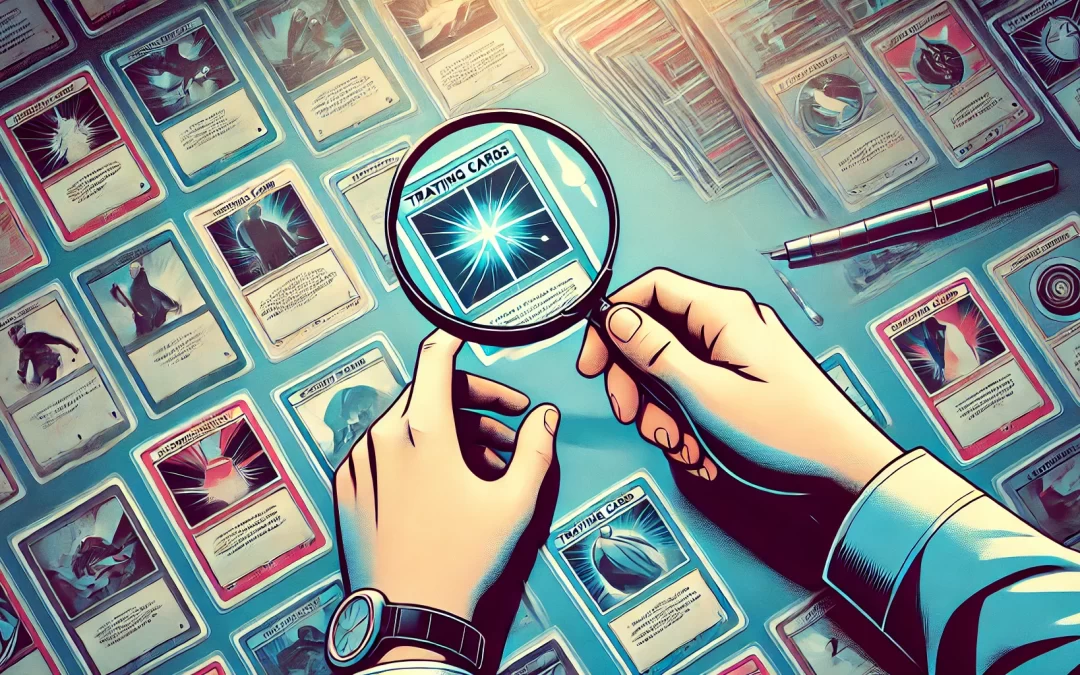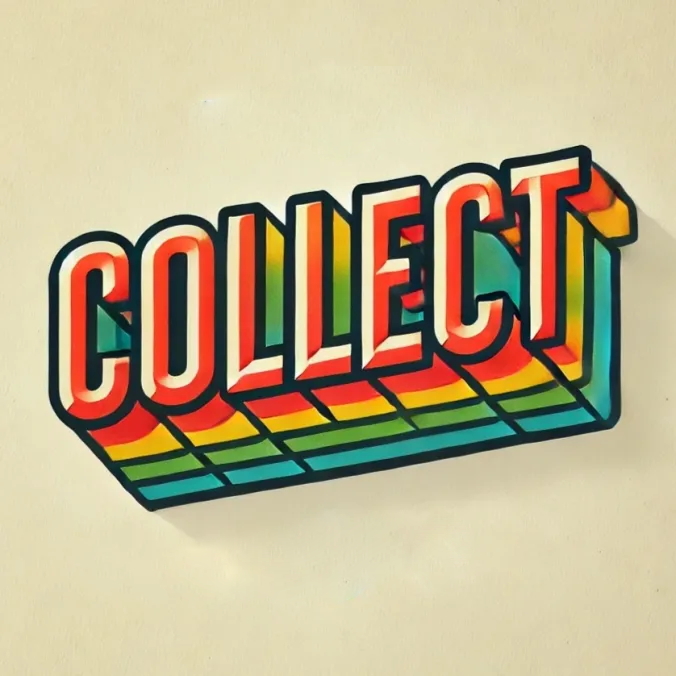For trading card collectors, the thrill isn’t just in acquiring new cards—it’s also in discovering the hidden treasures within your existing collection.
You might have stacks of cards that you’ve accumulated over the years, but do you really know if any of them are more valuable than you think?
The trading card market is booming, with some cards fetching staggering prices at auctions. Yet, many collectors are sitting on potential gold mines without even realizing it.
The key to unlocking this hidden value lies in understanding what makes a card rare, learning how to identify these valuable cards, and knowing how to assess their worth accurately.
We’ll guide you through the process of uncovering rare trading cards in your collection.
Whether you’re a seasoned collector or just starting out, these insights will help you spot the gems that could be worth far more than you ever imagined.
What Makes a Trading Card Rare? A Deeper Dive
To start your treasure hunt, it’s essential to understand the factors that contribute to a trading card’s rarity.
Not all cards are created equal, and certain characteristics can make a card exceptionally rare and valuable.
Print Run and Scarcity:
One of the most significant factors in determining a card’s rarity is its print run. Simply put, the fewer copies of a card that were printed, the rarer it is.
For example, limited-edition cards or those from a smaller print run are typically harder to find and thus more valuable. Cards from older sets, especially those from before trading cards became a widespread hobby, can also be rarer due to the limited number produced and the natural attrition over time.
Condition Matters:
Condition is another critical factor. A card in pristine, mint condition is far more valuable than one with visible wear and tear.
Collectors and buyers are often willing to pay a premium for cards that have been well-preserved. When assessing your cards, pay close attention to corners, edges, centering, and surface quality.
Even minor imperfections can significantly impact a card’s value.
Player Popularity and Historical Significance:
The demand for a card can also drive up its value. Cards featuring popular players, especially those at the peak of their careers or with significant historical impact, are highly sought after.
Rookie cards of iconic players often fetch high prices, as do cards commemorating major milestones or events in the sport.
Errors and Misprints:
Sometimes, what might seem like a flaw can actually add value. Printing errors or misprints can make a card rare and desirable.
These errors can range from incorrect player information to printing defects. Collectors often prize these “mistake” cards because they represent a unique piece of the card’s history.
How to Identify High-Value Cards in Your Collection
With an understanding of what makes a card rare, it’s time to take a closer look at your collection.
Identifying potential high-value cards requires careful examination and a bit of research.
Research Popular Sets and Key Players:
Begin by cataloging your collection and identifying the sets and players featured.
Some sets are known for containing valuable cards, such as early editions of popular trading card series or special subsets within larger collections.
Research these sets online or consult trading card price guides to see if any of the cards in your collection are highlighted as particularly valuable.
Player popularity is also crucial. Cards featuring star players, especially those from their rookie years, tend to hold higher value.
Recent trends in the player’s performance or career milestones can also affect a card’s desirability.
For example, a player who has recently entered the Hall of Fame or achieved a significant career milestone may see an increase in the value of their cards.
Check for Special Editions and Variants:
Many trading card sets include special editions or variants that are more valuable than the standard versions.
These can include holographic cards, foil cards, or first edition prints.
Variants might also involve subtle differences in design, such as color variations or unique serial numbers.
Identifying these special editions requires a keen eye, so compare your cards to online databases or price guides to determine if you have any of these valuable versions.
Examine the Condition of Your Cards:
Even if a card is rare, its value can be significantly diminished if it’s not in good condition.
Take the time to carefully inspect your cards, looking for any signs of wear such as bent corners, faded colors, or surface scratches.
Cards in mint or near-mint condition are much more desirable to collectors.
If you believe you have a rare card in excellent condition, consider having it professionally graded.
Graded cards typically sell for higher prices, especially if they receive a high grade from a reputable grading service.
Spot the Errors:
Errors and misprints can make a card uniquely valuable. These mistakes could include anything from a player’s name being misspelled to a printing defect that alters the card’s appearance.
While these cards might seem like defects, they are often highly sought after by collectors.
Compare your cards to official images or descriptions online to identify any potential errors or misprints that could add value.
Valuing Your Rare Cards: Tools and Resources
Once you’ve identified potential rare cards in your collection, the next step is to determine their value.
Accurately valuing trading cards requires using a variety of tools and resources, from online price guides to professional appraisal services.
Using Online Price Guides:
One of the first places to check the value of your cards is through online price guides.
Websites like Beckett, PSA, and others provide regularly updated values for thousands of trading cards.
These guides offer a benchmark for what your cards might be worth based on recent sales and market trends.
Keep in mind that prices can fluctuate, so it’s a good idea to check multiple sources and consider the card’s condition when assessing its value.
Consulting Auction Sites:
Auction sites like eBay can provide real-time data on what collectors are currently paying for specific cards.
By searching for your card and filtering the results to show only recently sold items, you can get a sense of the market value.
Pay attention to the condition and any special features of the cards that have sold for higher prices.
This can give you insights into how much your card might be worth if you decide to sell.
Grading Services:
If you have a card that you believe is particularly rare or valuable, it may be worth getting it professionally graded.
Grading services like PSA, BGS, and SGC assess the condition of your card and assign it a grade on a scale, typically from 1 to 10.
Cards that receive a high grade, particularly those graded 9 or 10, can be worth significantly more than ungraded cards.
Grading not only provides a professional assessment of the card’s condition but also adds credibility to its value when selling.
Joining Online Communities:
Engaging with online communities of trading card enthusiasts can be invaluable in learning more about the value of your cards.
Forums, social media groups, and online marketplaces dedicated to trading card collecting are great places to ask questions, share your findings, and get feedback from other collectors.
These communities can also alert you to trends in the market or upcoming events that might affect the value of your cards.
Selling Your Rare Cards: Maximizing Your Return
After identifying and valuing your rare cards, the final step is deciding how to sell them to maximize your return.
Selling trading cards can be done through various platforms, each offering different advantages.
Choosing the Right Platform:
Different platforms attract different types of buyers.
For a broad audience, selling on eBay might be the best option, especially if your card appeals to a wide range of collectors.
However, if you have a particularly rare or high-value card, specialized auction houses or marketplaces might be a better fit.
These platforms often have a more targeted audience who are willing to pay top dollar for rare finds.
Timing Your Sale:
Timing can be crucial when selling trading cards. Market conditions, player performance, and seasonal trends can all influence card values.
For instance, selling a card featuring a player who just won a major award or had a standout season might yield a higher price.
Conversely, it might be worth holding onto a card if you anticipate its value increasing in the near future.
Presenting Your Cards Effectively:
Presentation is key when selling cards online.
High-quality images that clearly show the card’s condition, along with a detailed description highlighting any special features, can make a big difference in attracting buyers.
Be sure to mention any relevant information, such as the card’s grade, any unique aspects, and the history of the card (if known).
A well-presented listing not only looks more professional but also builds trust with potential buyers.
Considering Dealer Sales:
If you’re looking for a quicker sale and don’t want to navigate the complexities of selling online, selling to a reputable dealer might be an option.
While you may not get the full market value, dealers often offer fair prices and can provide immediate payment.
This route is particularly useful if you’re selling a large collection or if you’re not interested in the time and effort required to sell individually.
Conclusion: Unlock the Hidden Value in Your Collection Today
Your trading card collection could be holding onto hidden value just waiting to be discovered.
By understanding the factors that make a card rare, carefully examining your collection, and using the right tools to assess value, you can uncover these hidden gems.
The trading card market is dynamic, with values constantly shifting based on trends, player performance, and collector interest.
Staying informed and regularly reviewing your collection can help you capitalize on these changes and potentially turn your cards into a lucrative investment.
Whether you’re in it for the love of the hobby or the thrill of the hunt, there’s nothing quite like the excitement of discovering that one of your cards is worth more than you ever imagined.
Start exploring your collection today—you might just find that hidden treasure.
Happy collecting!




